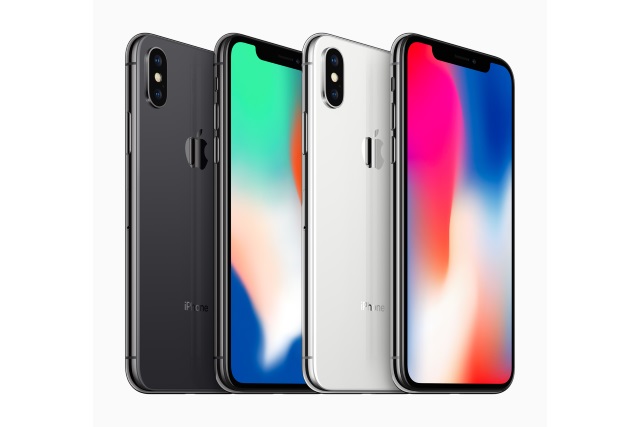The iPhone X has the best display of any smartphone

DisplayMate -- the display calibration and benchmarking firm -- has put the iPhone X through its paces and has come to the conclusion that it has the best smartphone display ever. This is an accolade that DisplayMate handed to the Samsung Galaxy S8 back in April, and with the iPhone X display having been supplied by Samsung, the new award is perhaps not a surprise.
While there have been some minor concerns about Apple's switch to an OLED panel, the move has definitely paid off. Apple is praised for the careful calibration it has put into the iPhone X's screen, causing DisplayMate to say: "the iPhone X is the most innovative and high performance smartphone display that we have ever tested."
See also:
- Apple warns of iPhone X screen burn-in problems
- iPhone X launches to lengthy queues as Apple shares hit a record high
- Privacy: 'Bottom feeders' could exploit the access Apple gives developers to iPhone X facial data
The iPhone X screen is said to have "excellent performance and accuracy," but approval is also thrown at the power management and brightness of the display. In DisplayMate's test, the iPhone X was found to be as good as or better than every single smartphone on the market. The phone's unique feature -- the infamous notch housing the camera and sensors -- is described as "noticeable but easy to get used to because it only takes up 2 percent of the total screen area."
Supporting both the sRGB / Rec.709 and Wide DCI-P3 color gamut standards is impressive enough, but the inclusion of color management means that even more are supported. DisplayMate notes that each iPhone X is individually calibrated for complete color accuracy. Viewing angles were deemed impressive:
While smartphones are primarily single viewer devices, the variation in display performance with viewing angle is still very important because single viewers frequently hold the display at a variety of viewing angles. The angle is often up to 30 degrees, more if it is resting on a table or desk. While LCDs typically experience a 55 percent or greater decrease in Brightness at a 30 degree Viewing Angle, the OLED iPhone X display shows a much smaller 22 percent decrease in Brightness at 30 degrees. This also applies to multiple side-by-side viewers as well, and is a significant advantage of OLED displays. The Color Shifts with Viewing Angle are also relatively small.
With a full screen brightness of 634 nits, home screen brightness of 726 nits, and a maximum, small area brightness of 809 nits, there is much to be impressed by. Other notable statistics include screen reflectance of just 4.5 percent, and a contrast rating for High Ambient Light that ranges from 141 to 180.
DisplayMate singles out the iPhone X's night-time performance:
The Night Shift mode on the iPhone X is designed to change the color balance of the display in order to reduce the amount of Blue light produced by the display, which some recent research indicates can affect how well users sleep afterwards.
The iPhone X also has a Super Dim Setting that allows the Maximum Screen Brightness to be set all the way down to just 2 cd/m2 (nits) using the Brightness Slider. This is perfect for night use on a bedside table, and useful for working comfortably without eye strain or bothering others in very dark environments, or affecting the eye’s dark adaptation, such as when using a telescope. The display still provides full 24-bit color and the picture quality remains excellent.
The test concludes by saying:
- The iPhone X is the most innovative and high performance Smartphone display that we have ever tested.
- First we need to congratulate Samsung Display for developing and manufacturing the outstanding OLED display hardware in the iPhone X.
- But what makes the iPhone X the Best Smartphone Display is the impressive Precision Display Calibration that Apple developed that transforms the OLED hardware into a superbly accurate, high performance, and gorgeous display!!
You can check out full details of the screen tests over on the DisplayMate website.